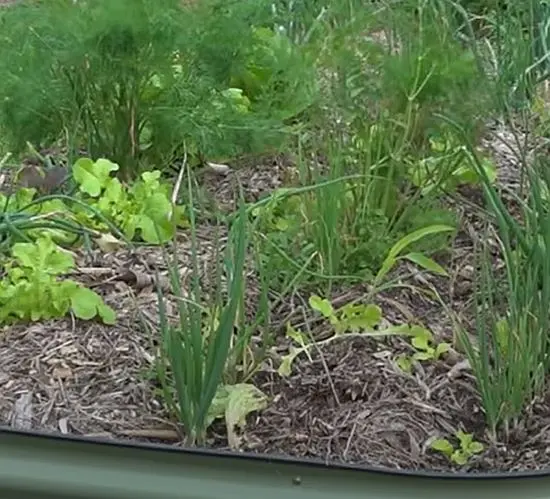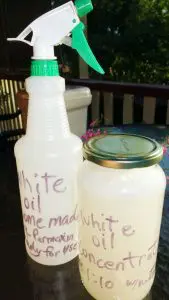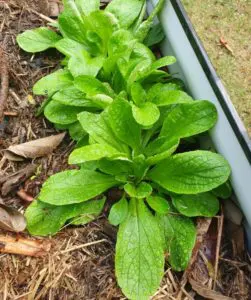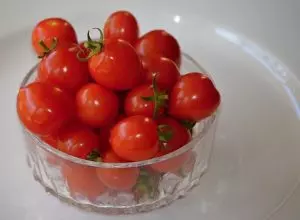At the start of any growing season, people plant like crazy with the excitement of growing vegetables. The excitement can quickly die down though, when those veggies start to pitter out before the season is fully finished, leaving gaps in your garden bed & a gap of time where you could still be growing, harvesting and enjoying fresh homegrown organic veggies. I like to call this the veggie gap.
I think we can do better than having a veggie gap, so here are my 5 top things you can do to grow more veggies right to the end of every season.
Over-sowing. Call it crowd-growing, call it cramming if you like…but my vegetables don’t practice social distancing.
I squash them in very close to each other because it allows me to get more produce out of the same space. When plants are grown close together, they compete with each other, and therefore grow a bit slower. I use this to my advantage by harvesting them as ‘babies’- baby beets, baby spinach, baby carrots, baby celeriac, etc.
I pick out every third or fourth one, so that I’m actually thinning the plants out as I harvest, therefore making space for the others to fully mature and grow on through to the end of the season, which extends the harvest. You might not want to do this for every vegetable, and there’s nothing wrong with following recommended spacings, but this method works well for many crops, like lettuce, spinach, carrots, beetroot (beets) and celeriac.

Interplant as you crowd-grow, too, as this maximises space even further. The above pic shows onions, lettuce and dill…quite the mixture. The onions grow slowly for the first few months, so they can be interplanted with faster-growing crops like lettuce. The onions’ growth rate increases in the second half of the season, so as the lettuce finishes the onions take off and fill the space left by the lettuce. In this way, interplanting really allows you to grow more with less over the longer term.
Nutrition or fertiliser. The point here is not just that your soil needs it, but that if you do enough before you plant, it’ll see you through the whole season. This is something I’ve done in my own garden for a long time and it works really well.
Building up a healthy, fertile soil with excellent structure will ensure you grow healthy plants that give a great harvest. So it’s not only about adding fertiliser, but creating great soil structure. I prepare my garden beds quite simply, by adding well-aged cow manure, chicken manure and compost to the soil at the beginning of each season, then topping with mulch. Click here to watch our video showing exactly how to do this.
It’s really less maintenance & less work for you in the long run, because if the bed is prepared with adequate fertiliser and nutrients at the start of the season it will sustain itself until the plants have fruited and are ready to be pulled out. It’s worth putting in the work at the start, because you’ll get better results and it takes out all the guess-work about your soil. To look at it another way, under-fertilising will shorten your season.

Pruning. This revitalises plants and triggers new growth. When you remove foliage from a plant, it thinks it’s been grazed by something or there’s been a storm and lost leaves or branches, so its natural defence system kicks in, and it starts to grow back because its been stimulated to repair those broken leaves and branches. Tomatoes are a great example of this; you might have already experienced that you can slow the demise & extend the harvest by pruning off any diseased leaves and foliage.
If you prune gently (don’t overdo it!), it will stimulate growth, and that new growth will come back new, improved, bushier and better.

Regular Harvesting. Just like pruning, regular harvesting stimulates growth and increases your harvest. Peas, lettuce, & broccolini are good examples of this. If you don’t harvest as you go, you’ll end up shortening a plants life because the plant will reach maturity, have all its fruit and foliage, then it will die back and set seed. If you keep picking the fruit off as it appears, it will keep regenerating fruit and foliage, which will prolong the time to maturity.
You won’t stop a plant actually reaching maturity, but you can slow the process down and get more fruit than you would if you just waited for one harvest at the end of its life. There are a few exceptions to this of course- hearting lettuces, for example- but generally, harvesting fruit as it appears will help you extend the season, because the more you harvest, the more you get.

Succession sowing. Sowing in succession allows you to maximise crop growth over the full season. As in the pic above, when cabbages get harvested, I’ll pull out the mature plants then replace them straight away with a fresh seedling. If your timing is right and you’ve planted out early enough, there will be time to get a second crop in. I plant in exactly the same bed, and usually in the same planting hole. Going back to point 2, nutrition and fertiliser, I’m able to do this because I prepared the soil properly at the start of the season. I know there’s enough nutrition in the soil for another planting, so its really easy to just pop new seedlings straight in. Not having to amend the soil has the added benefit of not disturbing the surrounding plants.
Growing in containers can help here too. Using pots can help to manage your harvests according to the weather, because as it warms up or cools down you can move them around. They’re also easier to net if you need to, so you can really get the maximum out of your growing time.
Do these 5 things and you’ll be sure to grow more veggies all season, every season. For more top tips on growing fruit and veggies, see our youtube channel.













